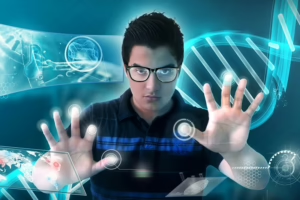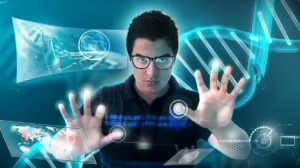The Language of Technology: How It Shapes Our World
Introduction
In the 21st century, technology permeates every aspect of our lives. From communication to education, healthcare, and business, the language of technology has become an integral part of our daily experiences. This article explores how this language shapes our world, influences our interactions, and affects our understanding of society.
1. Understanding the Language of Technology
The language of technology is multifaceted, encompassing terms and concepts from various fields, including computer science, engineering, and digital communication. It is a language that evolves rapidly, reflecting advancements and societal shifts. At its core, technology language includes programming languages, technical jargon, and user interface vocabulary.
1.1 Programming Languages
Programming languages serve as the backbone of software development. Languages like Python, JavaScript, and Ruby facilitate communication between humans and machines. Each programming language has its syntax and semantics, making it essential for developers to choose the right one for their specific tasks.
1.2 Technical Jargon
Technical jargon simplifies complex ideas for practitioners but can alienate those outside the field. For example, terms like “API,” “cloud computing,” or “machine learning” can intimidate those unfamiliar with the technology. This barrier reinforces the digital divide, where access to knowledge and skills is unevenly distributed.
1.3 User Interface Vocabularies
The language of technology is also evident in user interfaces (UI) and user experience (UX) design. Terminology such as “click,” “swipe,” or “scroll” standardizes interactions across devices, making technology more intuitive. As designs become more user-centric, the language adapts to prioritize ease of use.
2. The Evolution of Communication
A significant aspect of the language of technology is its impact on communication. The transition from traditional forms of communication to digital has reshaped how we express ourselves.
2.1 Social Media Language
Platforms like Twitter, Instagram, and Facebook have given rise to a new lexicon. Hashtags, emojis, and acronyms (like “LOL” or “BRB”) facilitate quick and often informal communication. This vernacular creates a digital culture that can sometimes obscure meaning while enhancing creativity and expression.
2.2 Email and Professional Communication
In contrast, emails and professional texts have cultivated a more formal technological language. Phrases like “per my last email” or “please advise” have become staples in business correspondence. This formality can sometimes create ambiguity, leading to misunderstandings.
2.3 The Rise of Multimedia Communication
The integration of visuals and audio in communication—through platforms like Zoom or WhatsApp—adds layers to the language of technology. The combination of text, images, and video fosters richer interactions but also necessitates new skills that individuals must acquire to communicate effectively.
3. Education in the Digital Age
The educational landscape has transformed dramatically due to technological advancement. The language of technology is now fundamental not only in teaching but also in learning.
3.1 E-Learning Platforms
Platforms such as Coursera, Khan Academy, and edX leverage technology to offer educational content accessible to anyone with an internet connection. The language used in these platforms—like “modules,” “quizzes,” and “certificates”—shifts the traditional paradigm of education and democratizes learning.
3.2 Digital Literacy
As technology becomes integral to education, digital literacy has emerged as a crucial competency. Understanding the language of technology—including coding, data analysis, and information management—is vital for students to thrive in a technology-driven world.
3.3 Gamification in Learning
Gamification utilizes game-like elements in educational contexts to enhance engagement. Terms like “points,” “levels,” and “badges” have infiltrated educational discourse, reflecting the evolving nature of motivation and achievement in the digital age.
4. The Impact on Business
In the business sector, the language of technology has redefined operations, marketing, and customer interactions.
4.1 E-Commerce and Online Marketplaces
The rise of e-commerce platforms like Amazon and eBay has introduced a new vocabulary—terms like “cart,” “checkout,” and “user reviews”—that shape consumer behavior. This language not only facilitates transactions but also builds trust and community among users.
4.2 Digital Marketing Language
Digital marketing strategies rely heavily on the language of technology, employing terms such as “SEO,” “PPC,” and “analytics.” Understanding these concepts is essential for businesses to reach their target audiences effectively.
4.3 Remote Work Culture
The rise of remote work has popularized terms like “telecommuting,” “asynchronous,” and “collaboration tools.” This vocabulary reflects the changing nature of the workplace and the priorities of a workforce that values flexibility and connectivity.
5. The Role of Technology in Globalization
The digital revolution has accelerated globalization, and the language of technology facilitates this interconnectedness.
5.1 Global Communication Networks
Technological advancements have created global communication networks, allowing real-time interactions across continents. The language of technology translates cultural barriers and fosters dialogue, enabling collaboration on projects of global significance.
5.2 Cross-Cultural Exchange
As technology connects diverse populations, the language of technology becomes a bridge for cross-cultural exchange. Online platforms enable sharing ideas, traditions, and innovations, enriching our global culture.
5.3 Economic Development
Technological language is vital for economic development in emerging markets. Understanding digital tools can enhance productivity and create new economic opportunities, shifting the dynamics of global commerce.
6. Ethical Considerations
While technology drives progress, it also raises ethical questions about language and communication.
6.1 Digital Accessibility
The language of technology must be inclusive, ensuring that everyone, regardless of ability, can access information. This includes using accessible language and ensuring compatibility with assistive technologies.
6.2 Misinformation and Disinformation
The rapid spread of information online has created opportunities for misinformation. Understanding the language of technology is crucial for discerning credible sources and navigating the complexities of digital information.
6.3 Data Privacy and Security
The vocabulary surrounding data privacy—terms like “encryption,” “firewall,” and “GDPR”—has become critical in the digital age. Individuals must be equipped with the language to protect their personal information and understand their rights.
7. Conclusion
The language of technology profoundly shapes our world, influencing communication, education, business, and globalization. As it continues to evolve, it is essential for individuals and society to adapt, ensuring that the language remains inclusive, ethical, and accessible. Embracing this evolving language will empower us to navigate the complexities of a technology-driven world and harness its potential for positive change.
References
- G, Andrea. Understanding Digital Communication. Cambridge University Press, 2021.
- M, Ashley. Programming Languages: A Primer for Everyone. Tech Publishing Ltd., 2020.
- N, Baker. Digital Marketing Trends: Strategies for Success. Marketing Books, 2022.
- O, Carter. Globalization in the Digital Age. Routledge, 2019.
- P, David. E-Learning: Bridging the Gap. Educational Technology Journal, 2023.
- R, Fiona. Ethics in the Age of Technology. Ethics Press, 2024.


























Add Comment